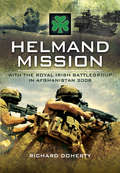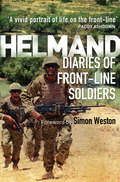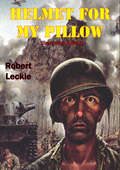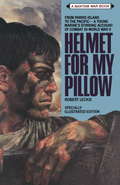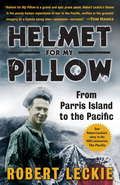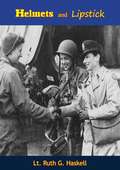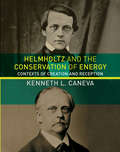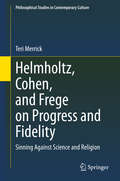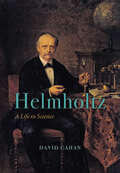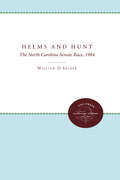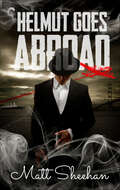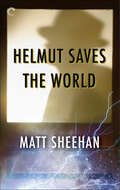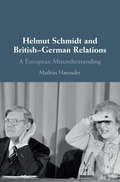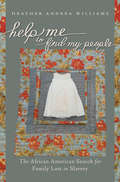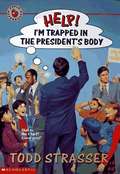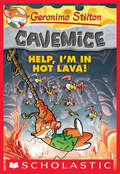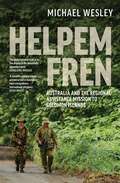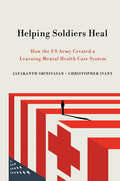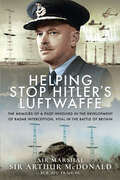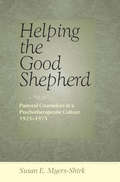- Table View
- List View
Helmand Mission: With The Royal Irish Battlegroup in Afghanistan 2008
by Richard DohertyAfter celebrating St. Patricks Day 2008, 1st Royal Irish Battlegroup deployed to Afghanistans Helmand province as part of 16 Air Assault Brigade. For six months the Royal Irish fought the Taliban in Helmand in some of the most difficult country on earth. At the same time the Battlegroup was training the nascent Afghan National Army (ANA) and many of its engagements were alongside Afghan soldiers. Well trained and with an operational maturity gained from deployments in every year but one since 1998, they were considered the unit in 16 Air Assault Brigade best suited to the critical task of mentoring the ANA. One company deployed with 2 PARA Battlegroup in the Sangin valley. Its soldiers saw intense action against the Taliban, especially through the latters use of IEDs (Improvised Explosive Devices). Another company was given the task of ensuring the safe passage of an additional generator for the Kajaki dam and was involved in heavy fighting while so doing. TA soldiers from 2 R Irish formed Imjin Company which provided security but also deployed on wider tasks. Professionalism, high levels of trust and the unique humor of Irish soldiers ensured that they had a successful tour and accomplished their missions. This is the stirring story of a regimental family at war and of those who sustained them, including their remarkable chaplain, Padre Albert Jackson, and the rear party which supported the families, especially those whose fathers or sons suffered injury or death. Above all, it is the story of a highly professional unit demonstrating its skills to the world and helping make Afghanistan a better place for its people.
Helmand to the Himalayas: One Soldier's Inspirational Journey
by David Wiseman Nick HardingFramed around the horrific massacre of five British troops at a police station in Helmand province in 2009, Green On Blue: Helmand to the Himalayas tells the inspirational story of Captain David Wiseman, the first soldier on the scene after the events who was subsequently shot, badly injured but found salvation on the slopes of Mount Everest as one of Prince Harry's Mountain Heroes.This exhilarating memoir takes the reader on a gritty tour of Helmand Province with Captain Wiseman and his unit of infantrymen. Told with grit, he reveals what it was really like being one of the British Army's senior mentors to the Afghan National Army and recounts the horrors, humours and occasional absurdities of the conflict. For the first time he tells the story of the events of November 3rd, 2009 when a rogue Afghan police officer hijacked a unit of British soldiers as they rested in a police compound after a patrol. The 'green-on-blue' massacre remains the single biggest loss of life for British soldiers in the Afghan conflict and led to questions about the UK policy of cooperation and mentoring within Afghanistan and the reliability of the Afghan Police Force. The horrific scenes Captain Wiseman witnessed that day were to stay with him and alter the course of his life. Just a few weeks later, suffering from the early signs of PTSD, he was shot while on patrol and sustained life-changing injuries. The bullet that almost killed him is still lodged in his chest.The book tells the story of his recovery at Headley Court rehabilitation centre and the trauma of the PTSD which affected him following his tour of duty. With rare honesty, he tells of the hidden psychological injuries that remain after the physical wounds have healed. He recounts how frustration and chance led him to enlist to become one of an unlikely band of disabled ex-servicemen on a mission to climb Everest as part of the Walking With The Wounded charity. Against the odds, Captain Wiseman, who had no experience in climbing and a nerve injury which left him susceptible to intense pain sparked by temperature changes, was chosen to be in the summit team.With warmth and humour, the story details his training on some of the world's highest peaks and the friendships which were forged there. It exposes the crazy world of mountaineering, the parties on the peaks and culminates on the deadly slopes of the highest mountain in the world where Captain Wiseman discovers renewed purpose and pride.A cracking military chronicle, a dynamic adventure story and an inspirational memoir; Blue On Green: Helmand to the Himalayas takes the reader on a breath-taking ride across the world and details one man's journey from naive rookie, to broken vet, to hero.
Helmand: The Diaries of Front-line Soldiers
by Simon WestonA glimpse into life on the front line in Afghanistan told through the diaries of the British Marines During their tour of Afghanistan in 2008, a number of soldiers kept personal diaries of their experiences, and now, for the first time, Osprey Publishing has collected them together to provide a gripping first-hand account of life in the front line in modern warfare. Although these soldiers were on the same tour, they all encountered different experiences, and so while the time frame is the same, their perspectives are inevitably different. Included here are the diaries of Lt John Thornton, who sadly lost his life just two weeks before the end of the tour, a Padre, a CO, a 2IC, and a member of Lt Thornton's section. The diary of Lt Thornton's brother, Ian, who returned from Helmand in 2012, provides an example of the war four years later and provides further context to the original tour diaries.With an introduction that pulls the diaries together and puts them in context, this book provides a chance to look at what changes when the men and women come home, and what they learned from the tour.
Helmet For My Pillow [Illustrated Edition]
by Robert LeckieIncludes over 220 photos, maps and plans following Robert "Lucky" Leckie's Pacific War with the 1st Marine Division"Here is one of the most riveting first-person accounts ever to come out of World War II. Robert Leckie enlisted in the United States Marine Corps in January 1942, shortly after the Japanese attack on Pearl Harbor. In Helmet for My Pillow we follow his odyssey, from basic training on Parris Island, South Carolina, all the way to the raging battles in the Pacific, where some of the war's fiercest fighting took place. Recounting his service with the 1st Marine Division and the brutal action on Guadalcanal, New Britain, and Peleliu, Leckie spares no detail of the horrors and sacrifices of war, painting an unvarnished portrait of how real warriors are made, fight, and often die in the defense of their country. From the live-for-today rowdiness of marines on leave to the terrors of jungle warfare against an enemy determined to fight to the last man, Leckie describes what war is really like when victory can only be measured inch by bloody inch. Woven throughout are Leckie's hard-won, eloquent, and thoroughly unsentimental meditations on the meaning of war and why we fight. Unparalleled in its immediacy and accuracy, Helmet for My Pillow will leave no reader untouched. This is a book that brings you as close to the mud, the blood, and the experience of war as it is safe to come."-Print Ed.
Helmet for My Pillow
by Robert LeckieHere is one of the most riveting first-person accounts ever to come out of World War II. Robert Leckie enlisted in the United States Marine Corps in January 1942, shortly after the Japanese attack on Pearl Harbor. In Helmet for My Pillow we follow his odyssey, from basic training on Parris Island, South Carolina, all the way to the raging battles in the Pacific, where some of the war's fiercest fighting took place. Recounting his service with the 1st Marine Division and the brutal action on Guadalcanal, New Britain, and Peleliu, Leckie spares no detail of the horrors and sacrifices of war, painting an unvarnished portrait of how real warriors are made, fight, and often die in the defense of their country. From the live-for-today rowdiness of marines on leave to the terrors of jungle warfare against an enemy determined to fight to the last man, Leckie describes what war is really like when victory can only be measured inch by bloody inch. Woven throughout are Leckie's hard-won, eloquent, and thoroughly unsentimental meditations on the meaning of war and why we fight. Unparalleled in its immediacy and accuracy, Helmet for My Pillow will leave no reader untouched. This is a book that brings you as close to the mud, the blood, and the experience of war as it is safe to come.Now producers Tom Hanks, Steven Spielberg, and Gary Goetzman, the men behind Band of Brothers, have adapted material from Helmet for My Pillow for HBO's epic miniseries The Pacific, which will thrill and edify a whole new generation.From the Trade Paperback edition.
Helmet for My Pillow: From Parris Island to the Pacific
by Robert LeckieHere is one of the most riveting first-person accounts ever to come out of World War II. Robert Leckie enlisted in the United States Marine Corps in January 1942, shortly after the Japanese attack on Pearl Harbor. In Helmet for My Pillow we follow his odyssey, from basic training on Parris Island, South Carolina, all the way to the raging battles in the Pacific, where some of the war's fiercest fighting took place. Recounting his service with the 1st Marine Division and the brutal action on Guadalcanal, New Britain, and Peleliu, Leckie spares no detail of the horrors and sacrifices of war, painting an unvarnished portrait of how real warriors are made, fight, and often die in the defense of their country. From the live-for-today rowdiness of marines on leave to the terrors of jungle warfare against an enemy determined to fight to the last man, Leckie describes what war is really like when victory can only be measured inch by bloody inch. Woven throughout are Leckie's hard-won, eloquent, and thoroughly unsentimental meditations on the meaning of war and why we fight. Unparalleled in its immediacy and accuracy, Helmet for My Pillow will leave no reader untouched. This is a book that brings you as close to the mud, the blood, and the experience of war as it is safe to come. Now producers Tom Hanks, Steven Spielberg, and Gary Goetzman, the men behind Band of Brothers, have adapted material from Helmet for My Pillow for HBO's epic miniseries The Pacific, which will thrill and edify a whole new generation.
Helmet for My Pillow: From Parris Island to the Pacific
by Robert LeckieHere is one of the most riveting first-person accounts ever to come out of World War II. Robert Leckie enlisted in the United States Marine Corps in January 1942, shortly after the Japanese attack on Pearl Harbor. In Helmet for My Pillow we follow his odyssey, from basic training on Parris Island, South Carolina, all the way to the raging battles in the Pacific, where some of the war's fiercest fighting took place. Recounting his service with the 1st Marine Division and the brutal action on Guadalcanal, New Britain, and Peleliu, Leckie spares no detail of the horrors and sacrifices of war, painting an unvarnished portrait of how real warriors are made, fight, and often die in the defense of their country. From the live-for-today rowdiness of marines on leave to the terrors of jungle warfare against an enemy determined to fight to the last man, Leckie describes what war is really like when victory can only be measured inch by bloody inch. Woven throughout are Leckie's hard-won, eloquent, and thoroughly unsentimental meditations on the meaning of war and why we fight. Unparalleled in its immediacy and accuracy, Helmet for My Pillow will leave no reader untouched. This is a book that brings you as close to the mud, the blood, and the experience of war as it is safe to come.Now producers Tom Hanks, Steven Spielberg, and Gary Goetzman, the men behind Band of Brothers, have adapted material from Helmet for My Pillow for HBO's epic miniseries The Pacific, which will thrill and edify a whole new generation.From the Trade Paperback edition.
Helmets and Lipstick
by Lt. Ruth G. HaskellFirst published in 1944, this is a true firsthand account by U.S. Army nurse Ruth G. Haskell, 2nd Lieutenant A.N.C. (Army Nurse Corps), who worked on the North African front during World War II. She tells of the “trials and tribulations, the fun and the thrills” that she experienced as a member of the Corps.
Helmholtz and the Conservation of Energy: Contexts of Creation and Reception (Transformations: Studies in the History of Science and Technology)
by Kenneth L. CanevaAn examination of the sources Helmholtz drew upon for his formulation of the conservation of energy and the impact of his work on nineteenth-century physics.In 1847, Herman Helmholtz, arguably the most important German physicist of the nineteenth century, published his formulation of what became known as the conservation of energy--unarguably the most important single development in physics of that century, transforming what had been a conglomeration of separate topics into a coherent field unified by the concept of energy. In Helmholtz and the Conservation of Energy, Kenneth Caneva offers a detailed account of Helmholtz's work on the subject, the sources that he drew upon, the varying responses to his work from scientists of the era, and the impact on physics as a discipline.Caneva describes the set of abiding concerns that prompted Helmholtz's work, including his rejection of the idea of a work-performing vital force, and investigates Helmholtz's relationship to both an older generation of physicists and an emerging community of reformist physiologists. He analyzes Helmholtz's indebtedness to Johannes Müller and Justus Liebig and discusses Helmholtz's tense and ambivalent relationship to the work of Robert Mayer, who had earlier proposed the uncreatability, indestructibility, and transformability of "force." Caneva examines Helmholtz's continued engagement with the subject, his role in the acceptance of the conservation of energy as the central principle of physics, and the eventual incorporation of the principle in textbooks as established science.
Helmholtz, Cohen, and Frege on Progress and Fidelity: Sinning Against Science and Religion (Philosophical Studies in Contemporary Culture #27)
by Teri MerrickThis book examines the views of Hermann Helmholtz, Hermann Cohen and Gottlob Frege in reaction to the epistemic crises induced by rapid changes in 19th century scientific practice. Besides addressing longstanding interpretive puzzles of interest to Frege scholars, the book extracts precepts for rationally responding to paradigm shifts in scientific and religious traditions. Cohen’s work in particular is held up as an example of wisely navigating epistemic and hermeneutical crises in science and religion. The book will appeal to philosophers and historians of science or religion, especially to those concerned with the epistemic challenges posed by Kuhn’s The Structure of Scientific Revolutions.
Helmholtz: A Life in Science (California Studies In The History Of Science Ser. #10)
by David CahanHermann von Helmholtz was a towering figure of nineteenth-century scientific and intellectual life. Best known for his achievements in physiology and physics, he also contributed to other disciplines such as ophthalmology, psychology, mathematics, chemical thermodynamics, and meteorology. With Helmholtz: A Life in Science, David Cahan has written a definitive biography, one that brings to light the dynamic relationship between Helmholtz’s private life, his professional pursuits, and the larger world in which he lived. ? Utilizing all of Helmholtz’s scientific and philosophical writings, as well as previously unknown letters, this book reveals the forces that drove his life—a passion to unite the sciences, vigilant attention to the sources and methods of knowledge, and a deep appreciation of the ways in which the arts and sciences could benefit each other. By placing the overall structure and development of his scientific work and philosophy within the greater context of nineteenth-century Germany, Helmholtz also serves as cultural biography of the construction of the scientific community: its laboratories, institutes, journals, disciplinary organizations, and national and international meetings. Helmholtz’s life is a shining example of what can happen when the sciences and the humanities become interwoven in the life of one highly motivated, energetic, and gifted person.
Helms and Hunt: The North Carolina Senate Race, 1984
by William D. SniderIn 1984 Jesse Helms, television-commentator-turned-politician and high priest of the New Right in the U.S. Senate, and James Hunt Jr., North Carolina's first two-term governor in the twentieth century, clashed in a $22 million campaign that was the most costly race for a U.S. Senate seat in American history. The political brawl, featuring old-style tactics and the latest electronic techniques, reflected in microcosm many national and regional issues -- economic, social, racial, and religious. Originally published in 1985.A UNC Press Enduring Edition -- UNC Press Enduring Editions use the latest in digital technology to make available again books from our distinguished backlist that were previously out of print. These editions are published unaltered from the original, and are presented in affordable paperback formats, bringing readers both historical and cultural value.
Helmut Goes Abroad
by Matt SheehanLife is pretty good for me, Helmut Haase, dashing detective and ladies' man extraordinaire. I'm the industrious and charming half of the Fog City Detective Agency. My partner, Shamus O'Sheagan, is the most gifted and lazy Druid this side of the pond, but even he's settled down with an Amazonian police officer. Together we managed to save the world once already, but our next case is hitting closer to home.It all started when an old friend came to our door with a wild story about angel bones and necromancers. The bones belong to Azazel, former hero of the dreaded Cretan Empire, and the necromancers want to bring him back to life. The last thing anyone wants is Azazel to return and start another angelic war.When Shamus locates our quarry in the Mediterranean, it's bye-bye Wudong, hello luxury voyage to Capri, with a girl in every port and downtime to work on my fighting skills. Too bad such pleasures won't last. Not with a coven of necromancers ready to fight us to the death over those angel bones and the fate of the world...Read about Helmut and Shamus's previous adventure in Helmut Saves the World, available now.45,000 words
Helmut Saves the World
by Matt SheehanMy name is Helmut Haase and I'm one half of the Fog City Detective Agency-specifically, the half that pays all the bills. My partner, Shamus O'Sheehan, mostly drinks beer and naps. I keep him around because he's my friend, but also because he's a Druid. I'm just a detective, and there are plenty of those in Wudong, the Confederacy of Hesperia. There's not another Druid for miles.We had it pretty good until the day we met Alek Pallas. He hired us to track down a thieving employee, and even though something was off, his big fat check was too much to pass up. But the man we found wasn't what we were led to believe, and neither was Alek.I'm talking shape-shifters, fallen angels and a conspiracy involving the vicious Cretan Empire. At least we didn't die. Hope that doesn't ruin the story.Why am I telling you all this? Someday I'd like some credit for saving the world. Maybe not the entire world, and maybe not alone, but I still deserve a medal. And perhaps a cash prize.31,000 words
Helmut Schmidt and British-German Relations: A European Misunderstanding
by Mathias HaeusslerThe former West German chancellor Helmut Schmidt grew up as a devout Anglophile, yet he clashed heavily and repeatedly with his British counterparts Wilson, Callaghan, and Thatcher during his time in office. Helmut Schmidt and British-German Relations looks at Schmidt's personal experience to explore how and why Britain and Germany rarely saw eye to eye over European integration, uncovering the two countries' deeply competing visions and incompatible strategies for post-war Europe. But it also zooms out to reveal the remarkable extent of simultaneous British-German cooperation in fostering joint European interests on the wider international stage, not least within the transatlantic alliance against the background of a worsening superpower relationship. By connecting these two key areas of bilateral cooperation, Mathias Haeussler offers a major reinterpretation of the bilateral relationship under Schmidt, relevant to anybody interested in British-German relations, European integration, and the Cold War.
Helotes
by Cynthia Leal MasseyA small town with a big history, Helotes--20 miles northwest of downtown San Antonio--was named for the Spanish word elotes, or corn on the cob. So extensive were the fields of corn along its namesake creek, a Spanish official in 1723 called the area el Puerto de los Olotes, or Corncob Pass. When settlers later arrived, few ancient cornfields remained. Situated along Bandera Road, the town became a stagecoach stop, and a post office was established in 1873. Nevertheless, the settlement remained rural for the next 100 years. Helotes, known as a place to "let down yer hair and kick up yer heels," solidified its reputation in 1946, when John T. Floore Country Store, a dance hall and concert venue for top-rated country musicians, opened for business in downtown Helotes. The annual Cornyval Festival, inaugurated in 1966, continues this tradition. Incorporated in 1981, the town provides a verdant and hilly escape from the city.
Help Me to Find My People
by Heather Andrea WilliamsAfter the Civil War, African Americans placed poignant "information wanted" advertisements in newspapers, searching for missing family members. Inspired by the power of these ads, Heather Andrea Williams uses slave narratives, letters, interviews, public records, and diaries to guide readers back to devastating moments of family separation during slavery when people were sold away from parents, siblings, spouses, and children. Williams explores the heartbreaking stories of separation and the long, usually unsuccessful journeys toward reunification. Examining the interior lives of the enslaved and freedpeople as they tried to come to terms with great loss, Williams grounds their grief, fear, anger, longing, frustration, and hope in the history of American slavery and the domestic slave trade. Williams follows those who were separated, chronicles their searches, and documents the rare experience of reunion. She also explores the sympathy, indifference, hostility, or empathy expressed by whites about sundered black families. Williams shows how searches for family members in the post-Civil War era continue to reverberate in African American culture in the ongoing search for family history and connection across generations.
Help! I'm Trapped in the President's Body
by Todd Strasser<p>Washington, Jefferson, Lincoln, and ... Sherman? The eyes of the world are on Jake Sherman's school when the President of the United States comes to visit. But no one's watching too carefully, because Mr. Dirksen's crazy body-switching machine goes off by mistake, turning Jake into the President! <p>Look out, America--Jake's in charge! But is the country ready for a leader who's not even old enough to vote? <p> <p><b>Lexile Level: 590L</b></p>
Help, I'm in Hot Lava! (Geronimo Stilton Cavemice #3)
by Geronimo StiltonGeronimo Stilton's ancient ancestor Geronimo Stiltonoot is back in another prehistoric adventure!Geronimo Stiltonoot and his family are off to find a cure for Grandma Ratrock's aches and pains. She's heard that a remedy hides in Cheesy-La, a legendary valley that Geronimo isn't even sure exists. Little does he know that getting there will be an adventure among geysers, volcanoes, and rivers of molten lava!
Helpem Fren: Australia and the Regional Assistance Mission to Solomon Islands 2003–2017
by Michael WesleyIn 2003 Australia conceived, financed and led a Pacific-wide intervention into Solomon Islands to prevent the collapse of that state. The Regional Assistance Mission to Solomon Islands (RAMSI) was to remain there for fourteen years, costing over $2 billion and involving thousands of soldiers, police and public servants from Australia and across the Pacific. It was remarkably successful in an age of disastrous interventions. And yet, by the time it was withdrawn, RAMSI had largely vanished from the Australian public's mind. Helpem Fren is the first comprehensive history of Australia and the RAMSI intervention. Drawing on still-classified official documents and over thirty interviews, it records the preconditions, motivations and dynamics of RAMSI between 2003 and 2017. Providing an intimate look at the challenges of interventions and development assistance generally, Helpem Fren is also a portrait of the personalities involved and the complex interactions between two systems that couldn't be more different in culture, wealth, size and capacity. As Australia confronts the most challenging environment in the Pacific for seventy years, Helpem Fren offers readers a deeper understanding of the recent history of Australia's involvement with Solomon Islands and the Pacific.
Helping Soldiers Heal: How the US Army Created a Learning Mental Health Care System (The Culture and Politics of Health Care Work)
by Jayakanth Srinivasan Christopher IvanyHelping Soldiers Heal tells the story of the US Army's transformation from a disparate collection of poorly standardized, largely disconnected clinics into one of the nation's leading mental health care systems. It is a step-by-step guidebook for military and civilian health care systems alike. Jayakanth Srinivasan and Christopher Ivany provide a unique insider-outsider perspective as key participants in the process, sharing how they confronted the challenges firsthand and helped craft and guide the unfolding change.The Army's system was being overwhelmed with mental health problems among soldiers and their family members, impeding combat readiness. The key to the transformation was to apply the tenets of "learning" health care systems. Building a learning health care system is hard; building a learning mental health care system is even harder. As Helping Soldiers Heal recounts, the Army overcame the barriers to success, and its experience is full of lessons for any health care system seeking to transform.
Helping Soldiers Leverage Army Knowledge, Skills, and Abilities in Civilian Jobs
by Melissa A. Bradley Laura Werber Michael G. Shanley Cate Yoon Ellen M. Pint Eric J. Duckworth Jeffrey B. Wenger Jonathan Welch Nicole H. Curtis Tepring Piquado Trinidad BelecheThis report discusses the results of occupation surveys administered to soldiers in selected Army military occupational specialties (MOSs) to assess the level and importance of the knowledge, skills, and abilities needed in these MOSs and to develop better crosswalks between military and civilian occupations. The report identifies both a broader range of military-civilian occupation matches and higher-quality matches than existing crosswalks.
Helping Stop Hitler's Luftwaffe: The Memoirs of a Pilot Involved in the Development of Radar Interception, Vital in the Battle of Britain
by Arthur McDonaldAn RAF pilot recounts his vital role in the development of Britain’s WWII air defense system in this fascinating military memoir.During the 1930s, the UK had no realistic defense against fast-flying bomber planes. That was before radar technology proved capable of detecting an aircraft before it even reached British soil. This was shown in dramatic fashion during the Biggin Hill Experiment, when a young Arthur McDonald led three biplanes—all directed by radar sets on the ground—to intercept incoming aircraft. McDonald was told, “the whole future of this country depends on the results which you obtain.” His success led to a new military strategy focused on modern fighter planes using a newly developed radar network—all of which proved crucial during the Battle of Britain. For his work, McDonald received the Air Force Cross.In this enlightening autobiography, Air Marshal Sir Arthur McDonald describes those early radar experiments as well his other innovation, the Duxford flare path, designed to be visible to landing aircraft but not to enemy attackers. McDonald went on to hold many senior posts in the RAF before retiring in 1962. But it his part in the development of Britain’s air defense at the most crucial time in its history for which he will always be remembered.
Helping Survivors of Domestic Violence: The Effectiveness of Medical, Mental Health, and Community Services (Routledge Library Editions: Domestic Abuse #2)
by Judith S. GordonFirst published in 1998, this study investigates the effectiveness of services for helping women who are survivors of domestic violence. Looking at a sample from Western and Central Oregon, it examines the utilization and perceived effectiveness of resources for survivors and, in doing so, it systematically assesses the efficacy of community and professional services. This book will be of particular interest to social work students and practitioners, but will also be helpful to those studying healthcare and law.
Helping the Good Shepherd: Pastoral Counselors in a Psychotherapeutic Culture, 1925–1975 (Medicine, Science, and Religion in Historical Context)
by Susan E. Myers-ShirkThis history of Protestant pastoral counseling in America examines the role of pastoral counselors in the construction and articulation of a liberal moral sensibility. Analyzing the relationship between religion and science in the twentieth century, Susan E. Myers-Shirk locates this sensibility in the counselors’ intellectual engagement with the psychological sciences. Informed by the principles of psychology and psychoanalysis, pastoral counselors sought a middle ground between science and Christianity in advising anxious parishioners who sought their help for personal problems such as troubled children, violent spouses, and alcohol and drug abuse. Myers-Shirk finds that gender relations account in part for the great divide between the liberal and conservative moral sensibilities in pastoral counseling. She demonstrates that, as some pastoral counselors began to advocate women’s equality, conservative Christian counselors emerged, denouncing more liberal pastoral counselors and secular psychologists for disregarding biblical teachings. From there, the two sides diverged dramatically. Helping the Good Shepherd will appeal to scholars of American religious history, the history of psychology, gender studies, and American history. For those practicing and teaching pastoral counseling, it offers historical insights into the field.
